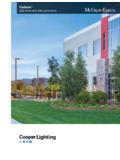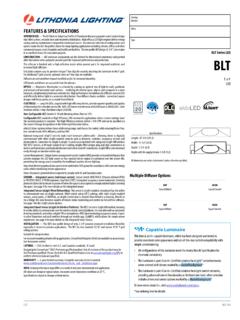Transcription of FIRE SAFETY RECORD OF TESTS LOGBOOK
1 fire SAFETY RECORD OF TESTS LOGBOOK PREMISES ADDRESS: Responsible person AN INTRODUCTION TO YOUR LOG BOOK The Regulatory Reform ( fire SAFETY ) Order 2005 requires the responsible person for a premises to ensure that all fire SAFETY facilities, equipment and devices are maintained in efficient working order and in good repair. Additionally, where there are employees, they should be provided with adequate SAFETY training. The Order requires that TESTS , maintenance and SAFETY training are capable of being audited to ensure they are being carried out. This fire SAFETY log book has been prepared to assist the responsible person in co-ordinating and maintaining a fire SAFETY RECORD keeping system. Whilst this book is not comprehensive it seeks to cover the main requirements for demonstrating compliance with current fire SAFETY legislation in respect of keeping fire SAFETY records. It is recommended that this log book is kept in a loose leaf format with new RECORD keeping pages being photocopied or downloaded when required.
2 The log book should be kept up to date and readily available for inspection or audit by the fire and Rescue Service as and when required. It should be noted that it is an offence for a person to knowingly make a false entry. USEFUL TELEPHONE NUMBERS (IN AN EMERGENCY DIAL 999) fire fighting equipment maintenance and repairs. fire alarm maintenance and repairs. Emergency lighting maintenance and repairs. Building maintenance Environmental Health Department Electrical equipment test engineers Health and SAFETY Executive LIST OF COMPETENT PERSONS and fire WARDENS within premises: Name Deputy Dept Tel.
3 Ext. Name Deputy Dept Tel. Ext. Name Deputy Dept Tel. Ext. Name Deputy Dept Tel. Ext. Name Deputy Dept Tel. Ext. Name Deputy Dept Tel. Ext. fire SAFETY TRAINING AND DRILLS fire SAFETY training must be given to employees so that they are aware of the following:- What to do if they discover a fire How to raise an alarm of fire .
4 What to do if they hear the fire alarm Where fire extinguishers are located and how to use them (if it safe to do so) Escape routes from the building The whereabouts of the evacuation assembly point(s) How to call the fire and Rescue Service Arrangements for the evacuation of people with special needs The dangers associated with obstruction of fire exits and wedging open of fire resisting doors SAFETY training should be given:- At the time they are first employed, On their being exposed to new or increased risks, and, At periodic intervals as appropriate. (at least annually, depending upon the nature of the risk) SAFETY drills should be carried out:- At periodic intervals appropriate to the nature of the risk. (a minimum of one SAFETY drill each year is recommended) All employees MUST evacuate the premises regardless of seniority or commitments RECORD OF fire SAFETY TRAINING Name Date of appointment Type of training / evacuation or drill Date Name of trainer fire ALARM SYSTEM The fire alarm test should be carried out in accordance with the manufacturer s instructions and the current British Standard.
5 IT IS IMPORTANT THAT ANY TESTING OF THE fire ALARM SHOULD NOT RESULT IN A FALSE SIGNAL OF fire DAILY - Inspect the panel for normal operation of the system. Where provided, check that the connection to the monitoring centre is functioning correctly. WEEKLY TEST BY USER Carry out a test and examination to ensure that the system is capable of operating under alarm conditions, namely:- Operate a manual call point at approximately the same time each week using a different call point for each successive test. Where appropriate inform the monitoring control centre prior to the test. QUARTERLY INSPECTION OF BATTERIES - Batteries and their connections should be examined by a person who is competent in battery maintenance. Electrolyte levels should be checked and topped up as necessary. PERIODIC INSPECTIONS AND TESTS BY A fire ALARM ENGINEER - These should be carried out by a competent person, a fire alarm engineer. Requirements for these inspections and TESTS will depend upon the type and design of the system but will generally be carried out six monthly.
6 fire DETECTORS i. Carry out a regular visual inspection of each detector to check for damage, excessive accumulations of dirt, heavy deposits of paint and other conditions likely to interfere with correct operation. ii. Each detector should be checked and tested for correct operation and sensitivity in accordance with the manufacturer s instructions and the current British Standard. MEASURES TO REDUCE UNWANTED ALARMS False alarms will not only disrupt business operations but may also contribute to death or injury should fire and Rescue Service resources be deployed answering false alarms when they should be attending incidents where life or property is in danger. To reduce the probability of false alarms on systems incorporating automatic fire detectors it is very important that a suitable system of testing and maintenance is in place. The cause of any false alarm should be properly investigated with measures being taken to avoid a repetition. AUTOMATIC DOOR RELEASE MECHANISMS ACTIVATED BY THE fire ALARM SYSTEM WEEKLY - In conjunction with the fire alarm test, check that all the doors are being released and closing fully into the door rebates.
7 Note: All checks, TESTS and maintenance including faults and remedial action taken, should be recorded. The date on which each fault is rectified should also be recorded. fire ALARM AND AUTOMATIC DOOR RELEASE DEVICES RECORD of TESTS Date fire alarm call point/ detector location or number Automatic door release(s) satisfactory Yes / No Remedial action required Date completed Name of tester (print) EMERGENCY LIGHTING Emergency lighting TESTS should be carried out in accordance with the manufacturer s instructions and the current British Standard. DAILY - Where there is a central power supply, carry out a visual inspection of indicators to ensure the system is in a ready condition.
8 MONTHLY Simulate a failure of the normal lighting supply for sufficient time to allow all luminaires to be checked for correct operation. Check each luminaire for any obvious signs of damage or deterioration, including the cleanliness and general condition of lenses and diffusers. ANNUALLY - Simulate a failure of the normal lighting supply for the full duration of the battery and carry out a check of the charging arrangements to ensure proper functioning. Note: All checks, TESTS and maintenance including faults and remedial action taken, should be recorded. The date on which each fault is rectified should also be recorded. EMERGENCY LIGHTING RECORD of TESTS Date Type of test Remedial Action Required Date completed Name of tester (print) FIREFIGHTING EQUIPMENT Hose-reels The hose-reel test should be carried out in accordance with the manufacturer s instructions and the current British Standard.
9 ANNUALLY Each hose-reel should be completely run out and subjected to operational water pressure to ensure the hose is in good condition and that all couplings are water tight. Note: All checks, TESTS and maintenance including faults and remedial action taken, should be recorded. The date each fault is rectified should also be recorded. HOSE-REELS RECORD of TESTS Date Hose-reel location Inspection or test Remedial action required Date completed Name of tester (print) FIREFIGHTING EQUIPMENT Portable fire Extinguishers Portable fire extinguisher TESTS should be carried out in accordance with the manufacturer s instructions and the current British Standard. MONTHLY - Check to ensure each extinguisher is in position, accessible, not discharged, damaged or lost pressure (if fitted with a pressure indicator) and that operating instructions are clean, legible and face outwards.
10 Where circumstances require, where extinguishers are in exposed locations or particularly susceptible to theft or damage, the monthly checks should be carried out more frequently. ANNUALLY - Portable fire fighting equipment should be inspected by a competent person in accordance with the manufacturer s instructions. Note: All checks, TESTS and maintenance including faults and remedial action taken, should be recorded. The date on which each fault is rectified should also be recorded. fire EXTINGUISHERS RECORD of TESTS Date Extinguisher location Inspection or test Remedial action required Date completed Name of tester (print) MISCELLANEOUS TESTS AND CHECKS Means of escape, together with the measures provided for the protection of means of escape, should be inspected at periodic intervals.







